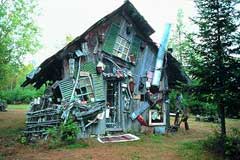$5000 Free MoneyThis is off topic, but it still addresses one of the root problems today. "Hillary Rodham Clinton said Friday that every child born in the United States should get a $5,000 'baby bond' from the government to help pay for future costs of college or buying a home."
Let's look at the stupidest commentary. "I think it's a wonderful idea," said Rep. Stephanie Stubbs Jones, an Ohio Democrat who attended the event and has already endorsed Clinton. "Every child born in the United States today owes $27,000 on the national debt, why not let them come get $5,000 to grow until their 18?"
Where the hell will this magical $5000 come from? That's right, the national debt. We don't have a surplus $20 billion (4 million babies * $5000) to hand out to babies. The USD's value will continue to suffer as our debt grows more and more out of control.
The money is suppose to help the child get started on life when they become an adult. Guess what happens when you give everyone $14,271 ($5000 with a modest 6% compound interest over 18 years)? It levels the playing field. This will be priced into the educational system and houses relatively quickly. In about fives years after this program is paying out, the money will be a necessary evil. It will become "priced in."
The same phenomenon happened with real estate tax breaks. Real estate prices went up partly because the tax breaks allow the consumer to spend more. The tax breaks no longer make owning advantageous, but that was the initial intent.
When you "price in" "free money", this adds to the inflation problem. It helps no one. (Social Security is different since individuals/employers pay into the program.)
All the presidential candidates except for Ron Paul want to keep spending money we don't have and make situations worse in the long run.
Ron Paul will be my choice.
